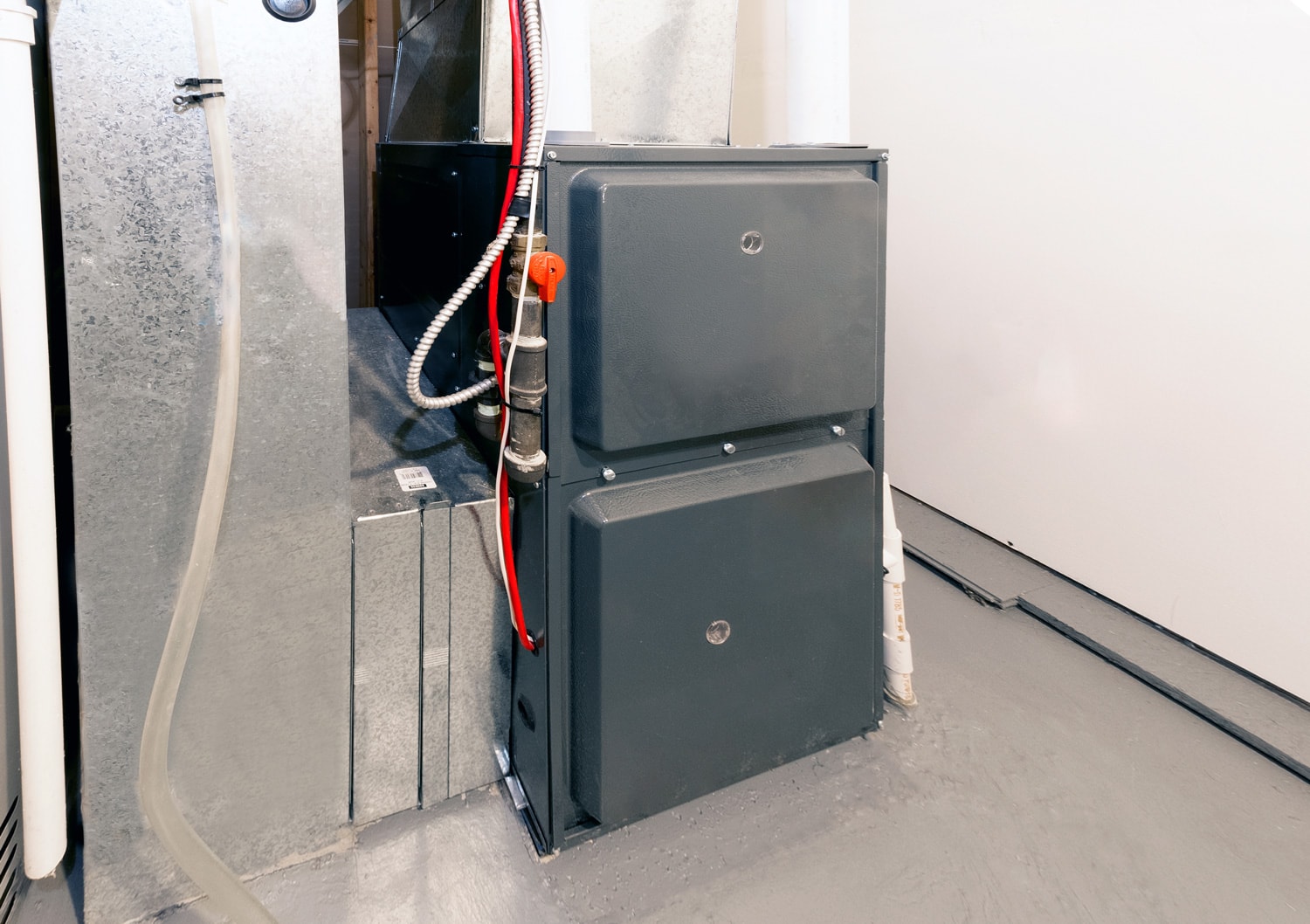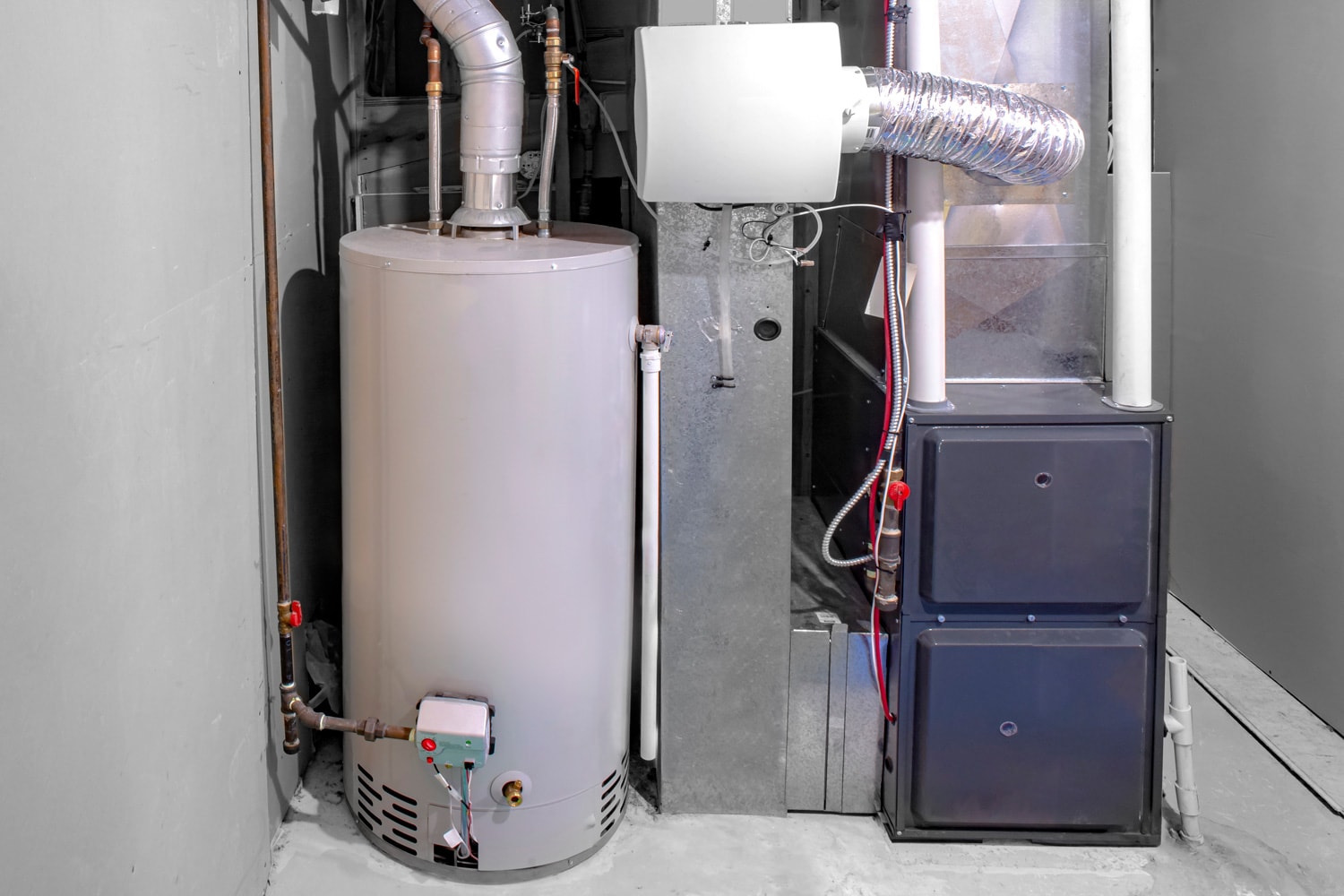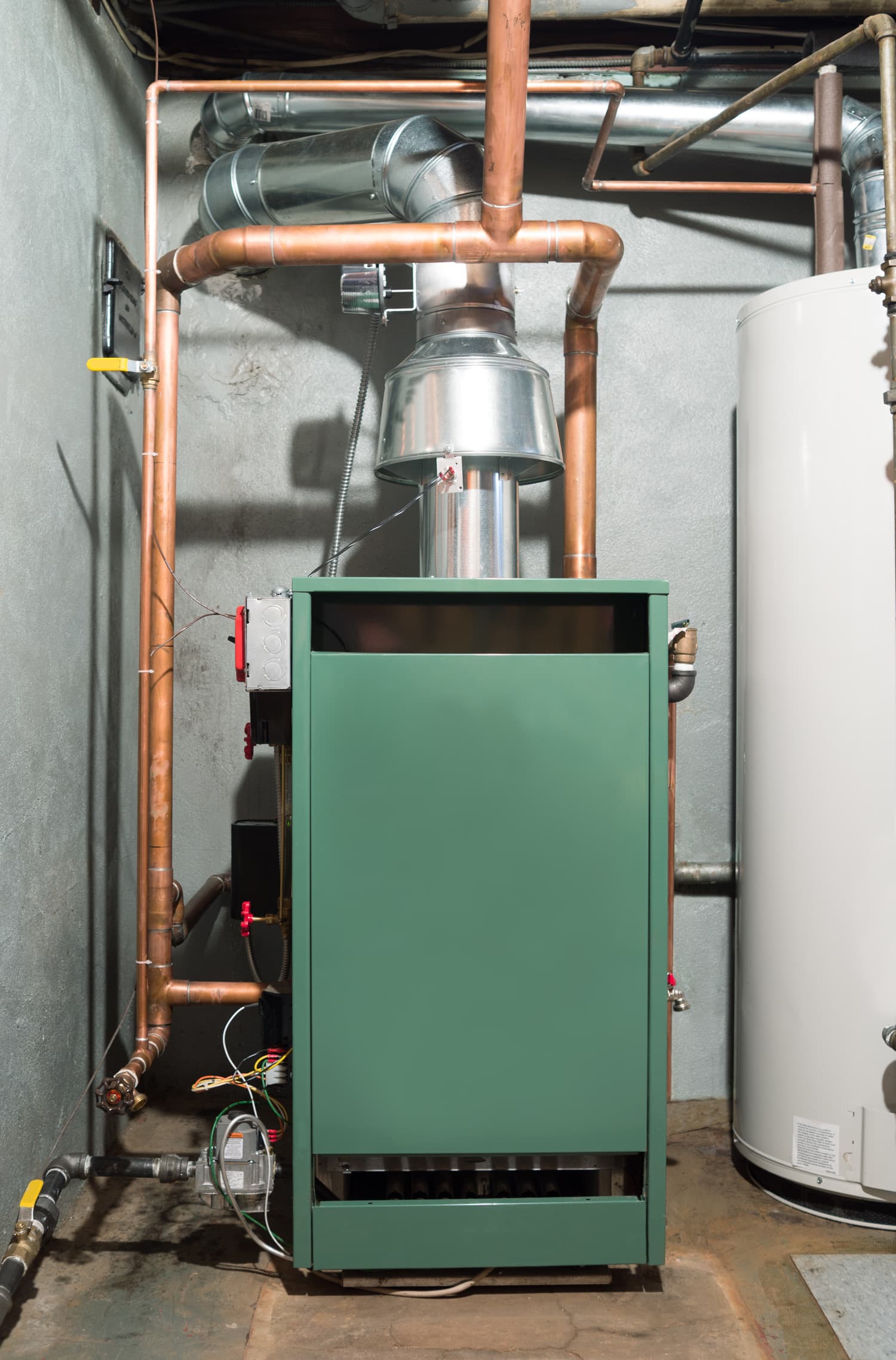Furnaces need enough space and airflow to function properly. The system may overheat if it does not have adequate clearance. But do not fret! We have researched every aspect you need to know about giving your furnace the room it needs.
Every locality establishes space requirements and safety regulations for furnace rooms. Generally, it is recommended your furnish should be at least 30 inches from the walls on all sides. This ensures proper ventilation as well as convenient access to the system.
This article will allow you and your family to enjoy your furnace's comfort and optimal performance. We'll also take a look at several topics on furnace types, features, guidelines, and safety. Read on to learn more!

What are the building requirements for furnace rooms?

Various locations have their own building codes. Here are the general guidelines you should know:
Furnace room clearance requirements
There should at least be a distance of 30 inches between your heating system and the walls surrounding it. If the walls are too close and the area is too confined, the lack of airflow can cause the furnace to shut off early.
Insufficient space also means that you and maintenance workers will have a difficult time accessing the furnace.
Furnace room ventilation
An effective and adequate ventilation system allows air intake for proper combustion and exhaust to expel carbon monoxide (CO) and other toxic substances.
This feature protects your family from potential fire and chemical exposure. Ideally, your furnace should have one vent on the floor and another on the ceiling, each measuring 12 square inches.
Check out Steel Wall and Ceiling Vents on Amazon.
Ceiling and wall requirements
Your furnace room should never be sealed or totally enclosed without proper ventilation. The best materials to use when building walls around your furnace include bricks and concrete as they provide better protection and insulation.
Furnace system energy requirements
Your furnace must also meet the minimum efficiency rating which is determined by its annual fuel utilization efficiency or AFUE rating. The requirement for most states is 80 percent efficiency. We'll look at this in more detail in the next section.
What are the features of a good furnace?

It is important for you to note whether you already own a furnace or are planning to install one that there are several features to consider.
1. Annual Fuel Utilization Efficiency (AFUE)
Simply put, the AFUE ratio is the amount of heat produced in relation to the cost of fuel consumed.
A system with an 80 rating means that 80 percent of its fuel is converted to usable heat while wasting the rest of the 20 due to inefficient burners, leaks, and the like. A furnace with a rating of 90 or higher is considered high-efficiency.
Furnaces with higher ratings naturally cost more. However, more efficient furnaces save you fuel expenses in the long run.
2. Furnace Load
This refers to the amount of required work to heat your furnace, calculating your home's heating load will help determine the type and size of furnace you need. It is best to consult an HVAC specialist for this task to accurately gauge your household's needs.
3. BTU Capacity
Home heating requirements vary, thus furnaces are rated in terms of BTU output or capacity. Short for British Thermal Unit, it is a measurement that indicates how much energy is needed to heat your home over a specified time.
A small home, for instance with an area of 800 to 900 square feet is recommended between 30,000 and 45,000 BTUs, whereas an average 2,000 square foot home will need between 80,000 and 115,000 units.
4. Warranty
Since furnace systems are relatively costly, it is an additional investment in your home. It would be ideal to know your warranty conditions.
There are three main types of furnace warranties available for new heating pieces of equipment.
Manufacturer Furnace Warranty
This kind of warranty is offered by the manufacturer of your heating system. This guarantee usually covers any major parts of the unit that have manufacturing defects and malfunctioning components.
A manufacturer's warranty is limited because it does not include unit replacement and free furnace repairs every time your unit breaks down.
Furnace Installation Warranties
These warranties are specifically issued by the contractor who installs your furnace and basically cover the entire heating system.
If the unit becomes faulty, or if any components have been damaged because of the installation, then the company would issue a parts replacement.
Generally, an installation warranty only lasts for a year; however, each HVAC companies have their own terms.
Extended Furnace Warranties
Extended warranties specifically lengthen the duration of your Manufacturer's Warranty. Let's say that your existing agreement lasts for only 10 years, you have the option to add additional years.
This coverage is not included in the buying price of the furnace but it is purchased separately.
Top Home Furnace Warranty Companies

American Home Shield
AHS covers furnace units that have broken down because of aging, as well as damage due to rust, corrosion, improper installation, and insufficient maintenance.
ShieldSilver, ShieldGold, and ShieldPlatinum are the three warranty plans available with this company. You have the option to choose your own service fee between $75, $100, and $125. The higher the fee, the lower the monthly premium you'll have to pay.
Choice Home Warranty
Choice Home covers various kinds of furnaces, including oil and gas heating units. It also offers coverage for the ductwork and venting systems.
You can select the Basic Plan or the Total Plan which specifically protects your furnace and any other appliances including your washer, dryer, refrigerator, and air conditioner. Both warranties will cost you $85.
Select Home Warranty
The Gold and Platinum Care Plans cover any repairs and replacements of all components within the heating system such as compressors, fan motors, pressure switches, and thermostats. This company also has a 90-day repair warranty.
Liberty Home Guard
Liberty Home Guard offers warranty coverage for both heating and air conditioning systems which covers the different components crucial for the operation of your furnace.
What are the safety tips if you have a furnace room?

Now that we have established the basic building requirements for furnace rooms, let's take a closer look at how to keep them safe for your family and household.
Space and Ventilation
You should make sure your furnace room has enough space for ventilation and maintenance work, and that the intakes and vents are not blocked to ensure proper air circulation.
Remember, it is important that furniture or other material should not be in contact with the furnace.
Storage Precautions
As much as possible, avoid using the furnace room as a storage area. Cleaning and laundry products, kitty litter, and boxes or suitcases are some of the items you should not store inside the said room.
Kitty litter contains ammonia. When this substance is exposed to high heat, it can cause fire and explosions.
Lighting Considerations
Avoid burnt lightbulbs and low lighting because, during emergencies, these materials can make walking around your furnace dangerous. Replace these bulbs with new ones and always have a flashlight available in case of a blackout.
Maintenance
Maintenance should always be the priority for the safety of you and your family.
Always inspect your unit for any rust spots and unusual noises because these could be a sign of issues within the system that needs immediate attention and repair. It is also ideal to replace your furnace filters regularly to ensure optimum performance.
Other Safety Tips Measures
- The floor should be dry and clutter-free
- Never leave any combustible materials near your furnace such as gasoline, paint, and paint thinners.
- Do not use the furnace room to dry laundry because it restricts airflow and it is a major fire hazard.
What are the various types of furnaces?
Natural Gas Furnaces
A gas furnace, as the name implies, operates with the use of natural gas. Presently, this type of heating system is the most efficient because innovation made it possible for this machinery to have a higher AFUE rating of up to 98%.
Oil Furnaces
This type of furnace uses oil instead of gas. A lower AFUE rating (between 80% to 90%) is the drawback of using this kind of heating system; however, the upfront cost is much lower than Natural Gas.
Electric Furnaces
Electric furnaces operate with the use of energy. They are the most affordable on the market and are easier to install. However, because the cost of electricity nowadays is much higher than gas, your electric bills will increase.
Propane
This kind of furnace is powered by propane which is a bi-product of gas and oil. It converts liquid propane into gas and is an ideal alternative if other power sources are not available or accessible in your area.
In Closing

Furnaces are significant household appliances. Installing one requires various safety measures that need to be followed in order to ensure the welfare of you and your family.
Now you know more about how to place your furnace to keep it functioning and safe. We've also seen other tips for keeping your furnace room in ideal condition and different types of warranties available for furnaces.
If you have found this article helpful, be sure to check out these useful posts:

